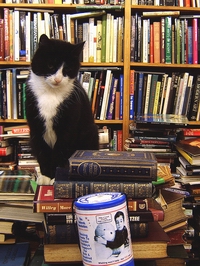Verifying References
John L. Waltman (1980) refers to unintentional plagiarism as "careless paraphrasing and citing or source material such that improper or misleading credit is given." (p. 37) At this stage of the writing process, you might be guilty of unintentional plagiarism because you are in the process of learning a new skill and people make mistakes when they learn new skills. However, this is the time to catch those errors because"”once the final paper is submitted"”no distinction will be made between intentional and unintentional plagiarism.
In this activity, one of your colleagues will verify that you are doing your references properly. And if your partner finds that you are guilty of unintentional plagiarism, you still have time to fix your errors before submitting your final paper for evaluation. Once your partner has verified your references, you will not need to have any fear that you have somehow accidentally committed plagiarism. In addition, you will have the opportunity to verify your partner's references to make sure that he/she has everything properly referenced.
Directions for Activity
Step 1: Select a Partner
- You should pick a partner with whom you want to work on this assignment.
Step 2: Switch Papers
- You and your partner should take each other's draft manuscript for the final paper along with copies of all research materials used for the paper.
Step 3: Verify References
- Quickly read your partner's paper.
As you re-read the paper, mark all citations that appear in the paper whether they are direct quotes, paraphrases, summaries, or ideas. Next, you should check your partner's references against the original sources; copies of which should have been given to you by your partner. Make sure that your partner's quotes are accurate and that paraphrases and summaries are true to the original source. You should also make sure that your partner clearly distinguishes material from other sources from his/her own thoughts. As you verify the accuracy of the sources, check to make sure that your partner has followed proper MLA format (Gilardi 2003). You should also check to make sure that no typographical errors appear in the URL for web pages or other references (e.g. listing the publication date as 1989 instead of 1998).
Once you have checked all of the references listed in your partner's paper, re-read it again. But this time, consider whether it is likely that a passage appears to be a quotation, summary, paraphrase, or idea that should have a citation. For example, does your partner make reference to a study that she/he could not have done? Or does the vocabulary or sentence structure appear to be in a style other than your partner's? Check the reference material given to you by your partner to see if you can find similar passages. Even if you cannot find the references for the material that you find questionable, be sure to make a notation for your partner.
Step 4: Return Paper
- Return your partner's paper to him/her. Spend time discussing the paper. If you found instances of accidental plagiarism, be sure to show your partner how to document correctly. You should also be sure to ask your partner about passages you would have expected to find documentation. In pointing out these passages, you are not accusing your partner of plagiarism.
Printer Friendly Version
Download a printer friendly copy of "Verifying References."
